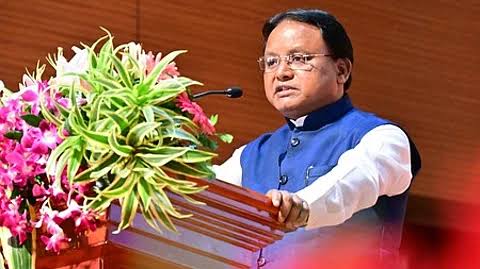Odisha at the Forefront of India’s Semiconductor Revolution

State to Host Country’s First SiC Wafer Manufacturing Unit under ISM 2.0
Bhubaneswar : Odisha is set to emerge as a crucial hub in India’s semiconductor journey with the Union government prioritising silicon carbide (SiC)-based wafer manufacturing under the second version of the India Semiconductor Mission (ISM 2.0). Officials from the Ministry of Electronics and Information Technology (MeitY) have confirmed that SiC wafers, considered strategically vital for high-performance electronics, will be given top priority in the upcoming policy framework.
Bhubaneswar to House India’s First Commercial SiC Fab
In August, the government approved the country’s first fabrication unit for SiC wafers. The facility, to be established in Bhubaneswar, will be developed by Chennai-based SicSem Private Limited in collaboration with Scotland’s Clas-SiC Wafer Fab. With an investment of Rs 2,066 crore, the unit will be the first commercial compound fab in India. The facility will have an annual capacity of 60,000 wafers and a packaging capacity of 96 million chips, making Odisha a key player in India’s ambition to reduce import dependence in advanced electronics.
RIR’s Mega Project: Two Phases, Global Standards
Adding to Odisha’s semiconductor prominence, RIR Power Semiconductors is launching a two-phase project in the state. Phase one, starting this month, will involve epitaxial wafer growth on pre-supplied silicon carbide wafers. Phase two, targeted for completion by December 2027, will establish a full SiC wafer fabrication plant. This unit will produce high-voltage MOSFETs, IGBTs, and diodes. The plant will be built on six acres of land allocated by the Odisha government, which has also extended fiscal incentives to the company.
Why SiC Technology Matters
Experts highlight that silicon carbide is a game-changer for the power electronics industry. Schugart, a senior executive associated with RIR, explained the three waves of SiC technology evolution. The first wave was the initial integration of SiC chips in conventional packaging. The second wave involved advanced packaging techniques to optimise thermal management. The third wave, now underway, is driving high-voltage applications exceeding 3.3 kV, with ambitions to reach up to 20,000 volts, a level unattainable with silicon. This technological leap places Odisha at the center of innovations that could redefine energy efficiency worldwide.
Odisha Government’s Strategic Push
The Odisha government has positioned itself as a proactive partner, offering land, fiscal incentives, and infrastructural support to attract semiconductor investments. Officials said the collaboration with RIR was chosen as the best fit to complement the state’s semiconductor roadmap, independent of other ISM-approved projects. The support reflects Odisha’s broader Electronics Component Manufacturing Policy 2025 and the Odisha Semiconductor Manufacturing and Fabless Policy 2025, aimed at creating a world-class ecosystem for advanced electronics.
Energy Efficiency and National Impact
Schugart pointed out that silicon carbide could play a crucial role in addressing energy losses. Citing a 2023 US grid study that revealed only 33 per cent of generated energy was effectively utilised, he noted that SiC technology could drastically improve efficiency in power conversion. For India, this means not only advancing in semiconductor manufacturing but also reducing carbon footprint and improving energy sustainability, a key goal aligned with Viksit Bharat 2047.
Local Benefits: Jobs, Skilling, and Exports
The semiconductor projects in Odisha are expected to create thousands of direct and indirect jobs, particularly in high-tech engineering and manufacturing roles. Skill development centres are also being planned in partnership with global majors to train Odisha’s youth in cutting-edge semiconductor technologies. Export potential is equally promising. RIR currently derives 20 per cent of its revenue from global markets and aims to expand further. With the Odisha plant, the state could soon become a major semiconductor export hub.
Partnerships Beyond Borders
RIR has already partnered with Pro Asia Semiconductor Corporation in Taiwan for silicon carbide manufacturing. The company believes in collaboration over vertical integration, sourcing talent and technology from across the globe. In India, RIR is also working with Indian Railways and DRDO to supply power electronics components, though large-scale deliveries are still awaiting final clearances.
Odisha: India’s Emerging Chip Capital
With two pioneering projects—SicSem’s Rs 2,066 crore SiC fab and RIR’s multi-phase facility—Odisha is no longer on the sidelines of India’s semiconductor story. Instead, it is emerging as a national leader in advanced electronics manufacturing, setting the stage for long-term industrial growth, energy efficiency, and global competitiveness. The state government’s commitment, coupled with India’s strategic prioritisation of SiC under ISM 2.0, positions Odisha to play a transformative role in the country’s ambition to become a semiconductor powerhouse by 2047.









